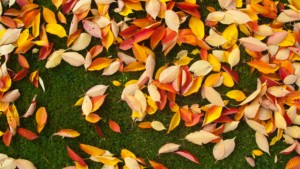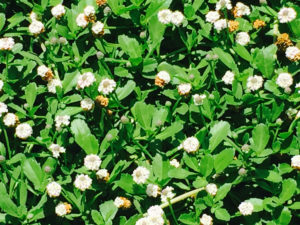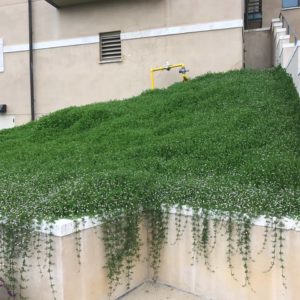Nov
You’ve Overseeded Your Warm Season Lawn. Now What?
By now, most of you who are going to overseed your California or Arizona sod have either begun the process or have had your seed down for a few weeks. Today, I want to discuss what to do now that you have the ryegrass growing and cooler temperatures are on the horizon.
Getting your ryegrass up and growing is obviously the first step to a successful winter lawn, but what about maintenance? How can you make sure your ryegrass is strong going into the winter and you will have a full stand of ryegrass once the temperatures begin to drop into the 40’s at night? There are several key items associated with a strong winter lawn but early preparation should be high on your list.
I know you put down a starter fertilizer with your seed but let’s remember that fertilizer will move freely in a saturated soil. The new plant took up most of the nutrients from the starter fertilizer application but the residual affect is limited because you’ve been keeping the seed wet for the past few weeks. So what exactly does this mean? Basically, what I’m trying to say is that once you’ve had your ryegrass lawn in for 2-3 weeks I would advise getting a second fertilizer application on the grass.
Comments Off on You’ve Overseeded Your Warm Season Lawn. Now What?Sep
Questions About Fall Overseeding? Check Out This Video Guide From Mr. Wise Grass!
Yes. It is about that time! If you have warm season grass, you are most likely considering overseeding your lawn. Check out this educational video including Q & A from Jay Danek–Mr. Wise Grass himself. After this video you will know exactly what you need to have the best winter lawn in the neighborhood!
Comments Off on Questions About Fall Overseeding? Check Out This Video Guide From Mr. Wise Grass!Aug
KURAPIA GROUNDCOVER SOD BACK IN STOCK!
Great news! We now have our Kurapia drought tolerant groundcover sod back in stock in California and Arizona!
What they’re saying about Kurapia…….
- “After extensive research and investigation, Kurapia was chosen for the following reasons: aesthetics, growth habit, drought tolerance, erosion control, weed suppression, disease resistance, maintenance aspects, and foremost and most importantly–water conservation–with the reduction of water usage. Kurapia met all of these expectations and more. I believe Kurapia will revolutionize the landscape industry
Mark Runk
G&R Engineering
El Cajon, CA
Comments Off on KURAPIA GROUNDCOVER SOD BACK IN STOCK!
Aug
Hot Weather Lawn Care for your California & Arizona Sod
There’s nothing quite like the cool, lush feel of green grass under your feet. As summer wears on, sometimes that green grass turns to a crunchy brown when not maintained properly. You can keep your beautiful green natural grass thriving even in hot climates if you follow these simple tips.
Mowing is an important part of maintaining your natural turf in desert climates of Southern California and Arizona. It’s best to mow either in the early morning or in the evening to avoid the peak of daytime heat. Set your mower at 3 inches or on the highest setting. When blades are taller, grass is much better able to handle the daytime heat. To this end, mow only a third of the lawn’s total height. Make sure your mower blades are sharp!
In addition to this, if you’re watering your sod correctly, you shouldn’t see any signs of heat stress in your lawn. Although it seems intuitive to water at night, this actually creates an unhealthy situation for your grass with water staying on the blades all night. Instead, water right before sunrise to reduce evaporation.
How can you tell if your natural sod is becoming dry? Look for curled leaf blades. Another sign is change in color. Anyone can tell by their brown grass that it is dry, but even if it becomes a lighter shade of green, it’s time to make sure it’s being properly watered. Most lawns need 1” of water in cooler temps, so for hot weather, it’s suggested that the grass may need 2” of water a week, making sure you water deeply twice a week so the moisture can penetrate into the roots.
West Coast Turf is the leading expert on Arizona sod and California sod and can help you with any questions you may have about installing and maintaining your natural turf lawn.
Visit us at https://www.westcoastturf.com
Comments Off on Hot Weather Lawn Care for your California & Arizona SodJul
Best Surfaces for Dogs in the California and Arizona Climates
If you’re a dog-lover (and who isn’t?) and want to make sure your four-legged friends are as comfortable as they can be in the hot desert temperatures in Arizona and California, read on for more info. We know, we know – it’s a dry heat! But that heat can wreak havoc on your furry pal’s paws. Many vets have treated dogs for severe burns to their paws in the summertime. They have a test for people to try before letting their dog walk on a surface: place the back of your hand on the surface before letting your dog onto it. If you struggle to keep your hand there comfortably, that surface is too hot for a dog to walk on. This doesn’t mean you can’t walk your dog in the hot summer months, but you need to be mindful about the surfaces around you. Studies have shown that certain surfaces retain heat far better than others. Of all the surfaces tested, artificial grass was consistently the hottest. Artificial turf, along with asphalt and the synthetic rubber material used to make running tracks, can easily measure up to 122º on a hot day.
What was the coolest surface for pooch’s precious paws? Natural grass. Plants and grass transpire by releasing oxygen and evaporating water, which allows them to stay cool in warm temperatures. Not only does natural turf feel amazing, lush, and somewhat cool in hot temps to your own bare feet, your dog’s paws will thank you as well. It’s important to remember that brown grass is drier and will feel hotter. This is where maintenance of your natural grass comes into play. At West Coast Turf, we are experts on Arizona and California sod and can answer any questions you have about natural turfgrass, sod installation, or anything else grass related!
Visit us at: https://www.westcoastturf.com
Comments Off on Best Surfaces for Dogs in the California and Arizona ClimatesJun
Arizona and California Summer Sod Tips
As summer approaches, people have more free time and the weather is conducive for spending lots of that free time outside. If your lawn needs care and you are laying and maintaining new sod, here are some simple tips to follow.
Watering
Making sure you water your sod correctly is crucial to maintaining its health. You will need to water your grass often and will want to keep the soil damp for three to four inches below the surface. It is important to make sure your lawn is moist but not overwatered. Sod that is overwatered is susceptible to disease. You may need to water several times a day – in the morning, midday, and early afternoon – to make sure it doesn’t dry out. You won’t need to water as much in shady spots, as these areas are more prone to fungus.
Mowing
Make sure the blades on your mower are sharp. This is something a lot of people don’t think about, but dull blades can tear up grass rather than cutting it. This will not only degrade the appearance of the grass, but will also leave it susceptible to harmful conditions. As a rule, try to mow your grass about once every two weeks. You don’t want to mow the grass too short, as taller grass grows deeper roots which then allows it to survive in hot, dry conditions.
Fertilizer
Look for fertilizers specifically designed for summer use. Certain fertilizers contain large amounts of nitrogen. This encourages fresh growth, which is normally helpful but is not in the hot summer months. The reason for this is that young grass isn’t as durable as older grass which causes it to work harder to stay healthy, putting stress on your lawn.
Remember that keeping sod healthy in the summer in desert weather can be a bit more challenging than other times of the year. West Coast Turf can help you determine the type of sod that suits your particular needs best.
Visit us online https://www.westcoastturf.com/ or contact us to find out how we can serve you.
Comments Off on Arizona and California Summer Sod TipsFeb
Annual Weed Control and Your Lawn
With the recent rise in temperatures and a little moisture you have likely seen some weeds pop up even if you had put down a pre-emergent in the fall. We have hit the end of the window where the fall application will control the weeds. It is now time to control the weeds that have snuck through your barrier and to put down a control for the summer annuals.
Let us start with controlling the weeds that have made their way through your turf. There are a couple different types of weeds to treat. Before we can give you chemicals to spray its important to recognize the type of grass you’re treating. I will put the recommendations down for a dormant turf lawn and one that has been overseeded with perennial ryegrass for the winter. If you did not overseed in the fall you will follow the dormant turf guidelines. My recommendations will be for bermudagrass so if you have paspalum or St. Augustine make sure you read the herbicide label prior to applying and follow the correct rate. These are usually different than bermudagrass.
Dormant Turf
If you let your Arizona and California lawn go dormant for the winter, it is starting to see a little life now with the warmer temperatures. You will not see any growth until the soil temperature reached 64 degrees which is usually in April, but your lawn will green up in color in March.
First step will be to clean up your lawn by mowing any debris and dead material off the top. This is not scalping the lawn, just get a good clean up. Next step will be to treat any broadleaves or grassy weeds that may have popped through your turf. For broadleaves you can apply 2,4-D and grassy weeds such as poa annua or volunteer ryegrass can typically be hand pulled, dabbed (not sprayed, think bingo dabber) with tiny amount of roundup or a product such as Revolver or Kerb. Because of its very shallow root system you should not have to use any products to kill it. It pulls out of the ground very easily and is usually caused by low areas and too much water.
Poa annua
Comments Off on Annual Weed Control and Your LawnFeb
Pre-Emergent Weed Control/Watering/Fertilizer
We are spending lots of time outside, and I know you all want to have your California and Arizona lawn looking its best! I’d like to talk about a few weeds that may be starting to appear in your lawn that are perennial problems. Let’s discuss getting down a pre-emergent herbicide on your lawn before all the spring and summer annuals start to show their faces. Weather obviously plays a key role in everything we do concerning turfgrass so it is important to get the timing right.
This has been a mild winter with little rain causing the ground temperature to stay slightly warmer than normal so we will have some early season weed issues. If you are in a cooler part of town and are still getting hit with the occasional frosts I would hold off until the first part of March. These cool areas can get the pre-emergent down as late as the middle of March, while areas such as Phoenix and Palm Desert should be putting one down between now and the end of the month.
Since most homeowners have an overseeded lawn for the winter I want to make it clear that there are two options on a herbicide bag. One is overseeded rates and the other is non-overseeded rates. If you would like to keep your ryegrass make sure that you follow the overseeded rate or it could take a turn for the worse rather quickly. Read the rest of this entry »
Comments Off on Pre-Emergent Weed Control/Watering/FertilizerFeb
Exterior Improvements To Increase Your California & Arizona Home Value
For the past year, since Covid-19 restrictions and lockdowns, home improvement has surged throughout the country, and especially in California. People are spending more and more time in their homes, giving them more motivation to reimagine and upgrade their indoor and outdoor spaces. Many are using this time to improve the curb appeal of their homes – one of the quickest and easiest ways to improve property values. Landscaping updates are an affordable way to increase the value of your California and Arizona home by 5-15% or to just add personality to it, even if you aren’t in the market to sell.
Starting with your grass, it’s important to keep in mind what type of sod is appropriate in relation to the seasonal climates where you live. In Southern California and specifically in desert climates, our California and Arizona sods are the perfect low-maintenance and low cost options. This type of grass is drought resistant in dry weather, making it eco-conscious and environmentally-friendly. If you are selling your home, this type of landscaping will attract buyers who are interested in a natural grass lawn that saves money and conserves water.
Coordinate your lush natural grass lawn with a variety of plants, shrubs, and trees. Blooming flowers are beautiful and healthy grass will help them – along with your other chosen vegetation – to stay alive and vibrant, enticing buyers to check out your property.
West Coast Turf and Western Sod is the leader in the sod farming industry for over four decades. We provide the best natural turfgrass and sod installation service in the business. Contact us or visit us online for all of your home landscaping needs – our beautiful natural grass can greatly improve your curb appeal!
https://www.westcoastturf.com/
Comments Off on Exterior Improvements To Increase Your California & Arizona Home ValueNov
You Have Overseeded Your California or Arizona Sod Lawn–Now What? And….Even if You Haven’t.
By now, most of you who are going to overseed your California or Arizona sod have either begun the process or have had your seed down for a few weeks. Today, I want to discuss what to do now that you have the ryegrass growing and cooler temperatures are on the horizon.
Getting your ryegrass up and growing is obviously the first step to a successful winter lawn, but what about maintenance? How can you make sure your ryegrass is strong going into the winter and you will have a full stand of ryegrass once the temperatures begin to drop into the 40’s at night? There are several key items associated with a strong winter lawn but early preparation should be high on your list.
I know you put down a starter fertilizer with your seed but let’s remember that fertilizer will move freely in a saturated soil. The new plant took up most of the nutrients from the starter fertilizer application but the residual affect is limited because you’ve been keeping the seed wet for the past few weeks. So what exactly does this mean? Basically, what I’m trying to say is that once you’ve had your ryegrass lawn in for 2-3 weeks I would advise getting a second fertilizer application on the grass.
Comments Off on You Have Overseeded Your California or Arizona Sod Lawn–Now What? And….Even if You Haven’t.






